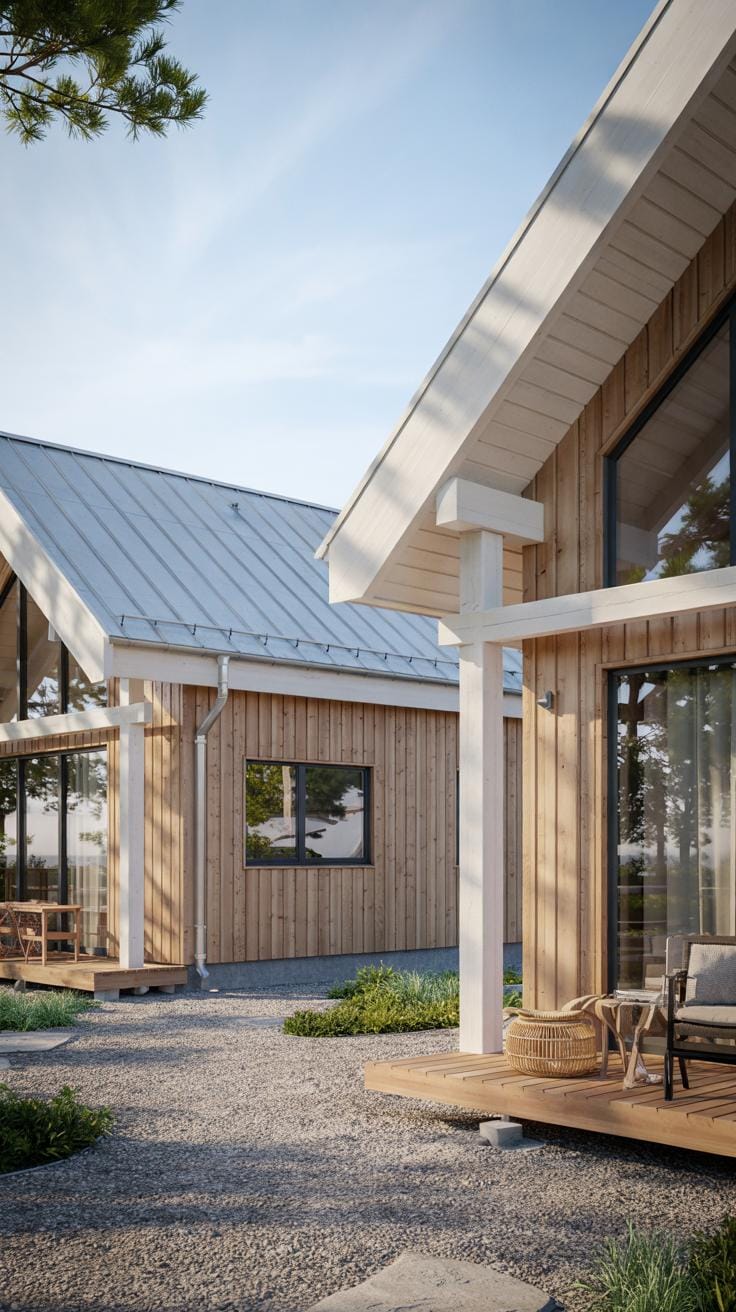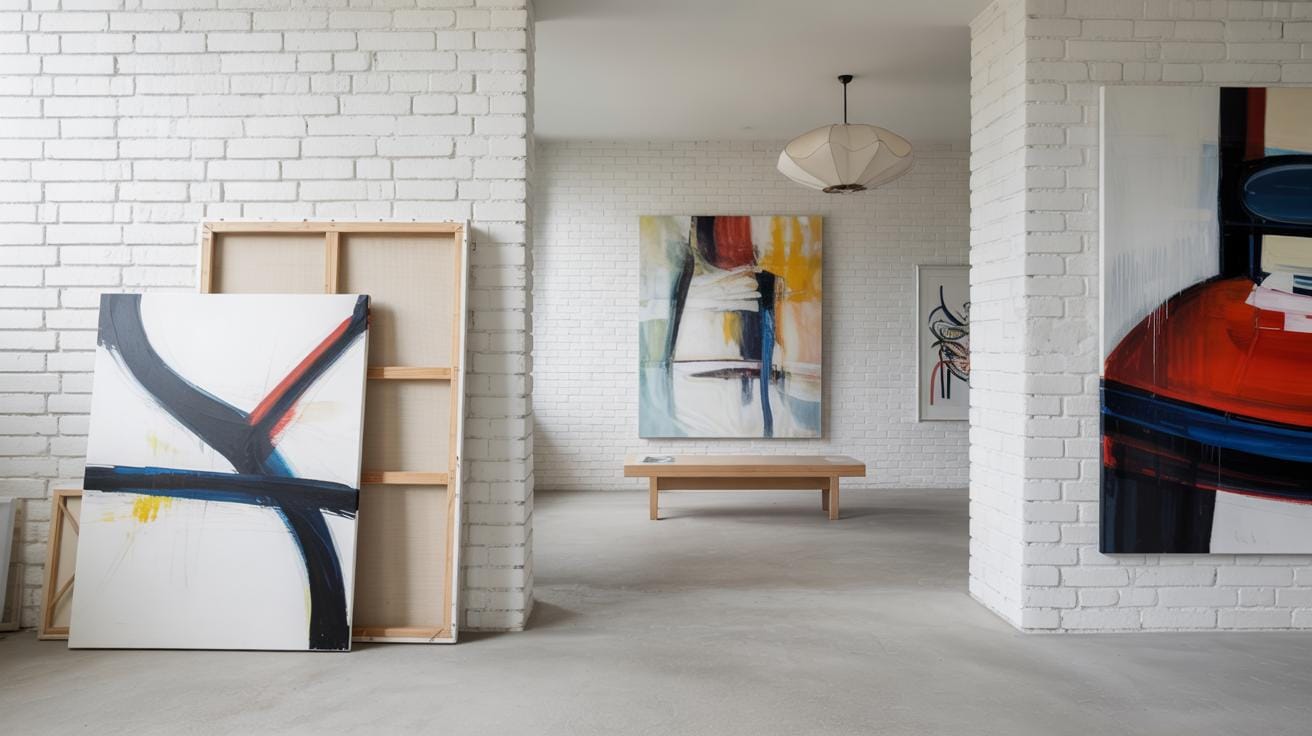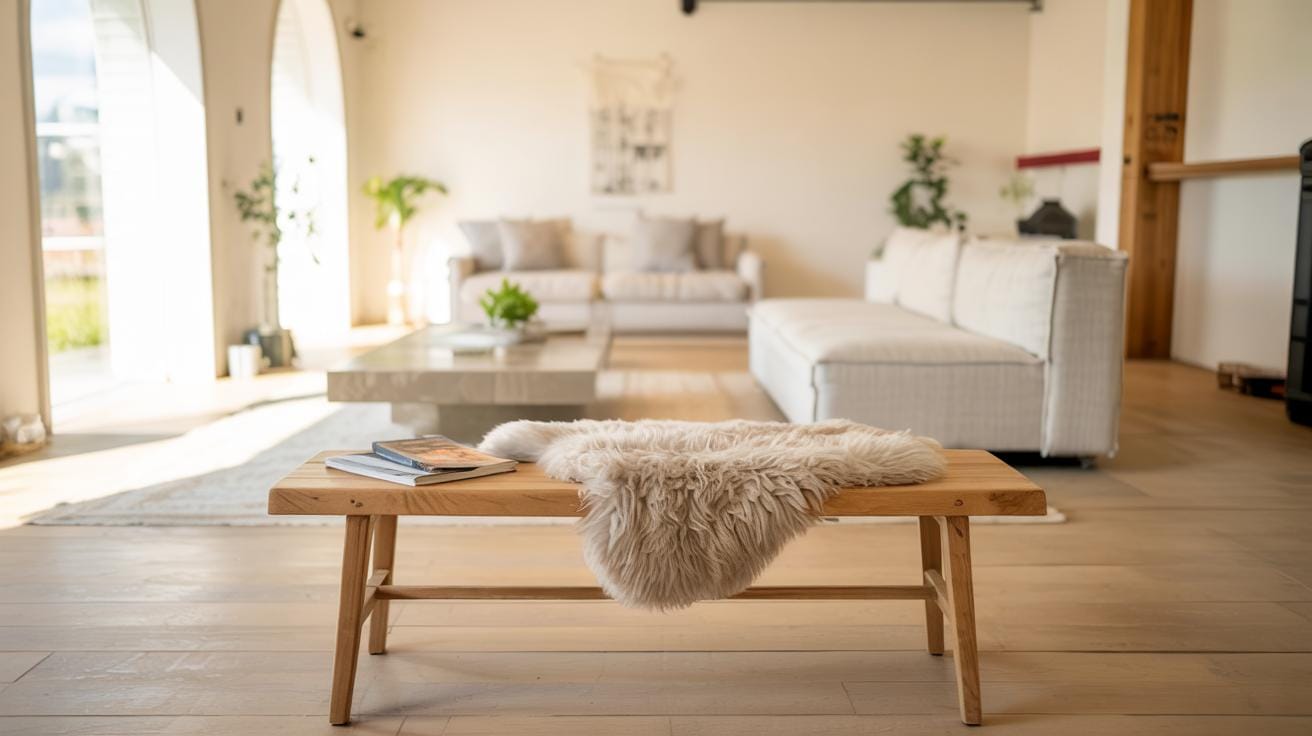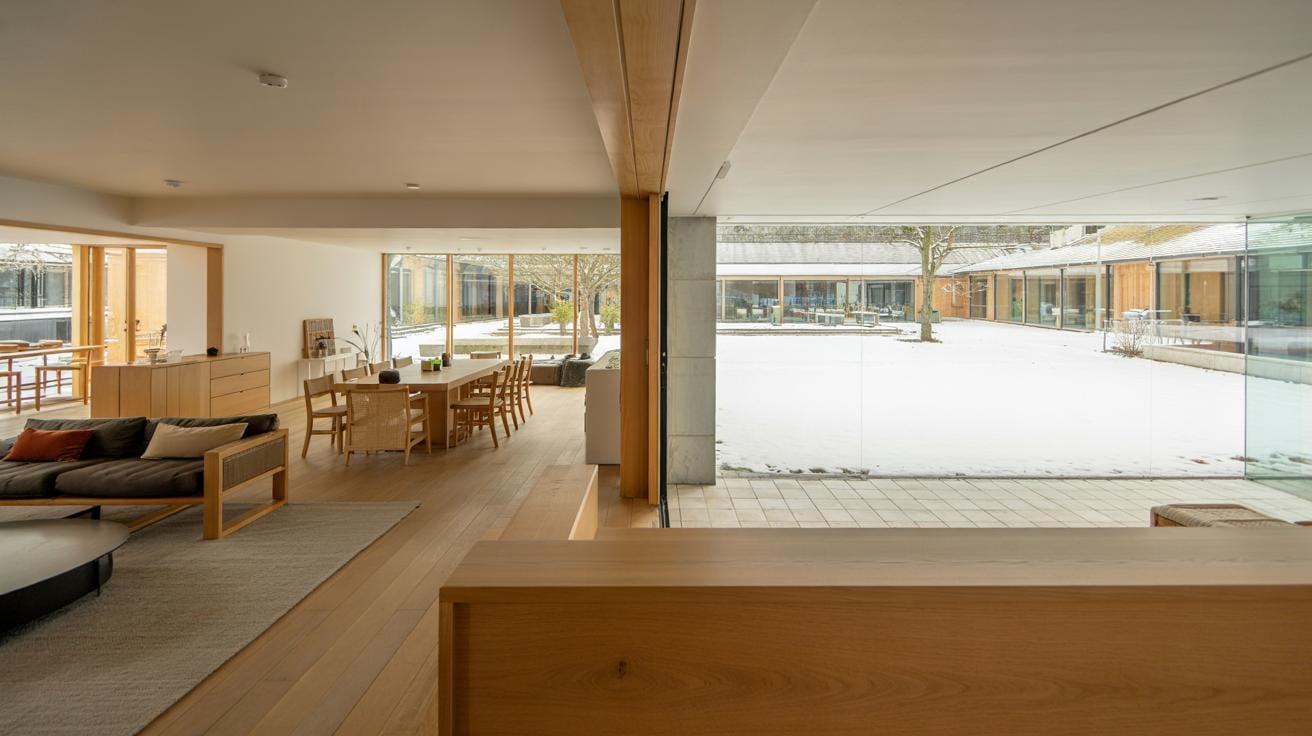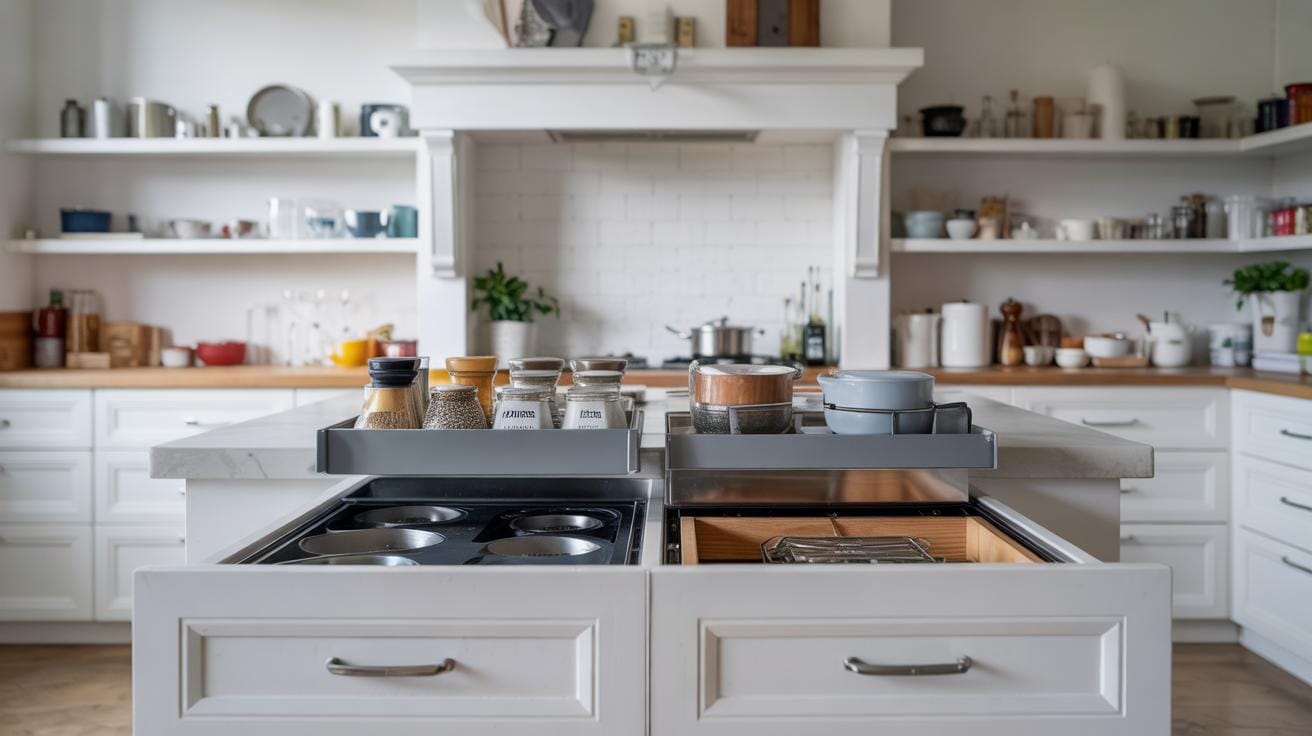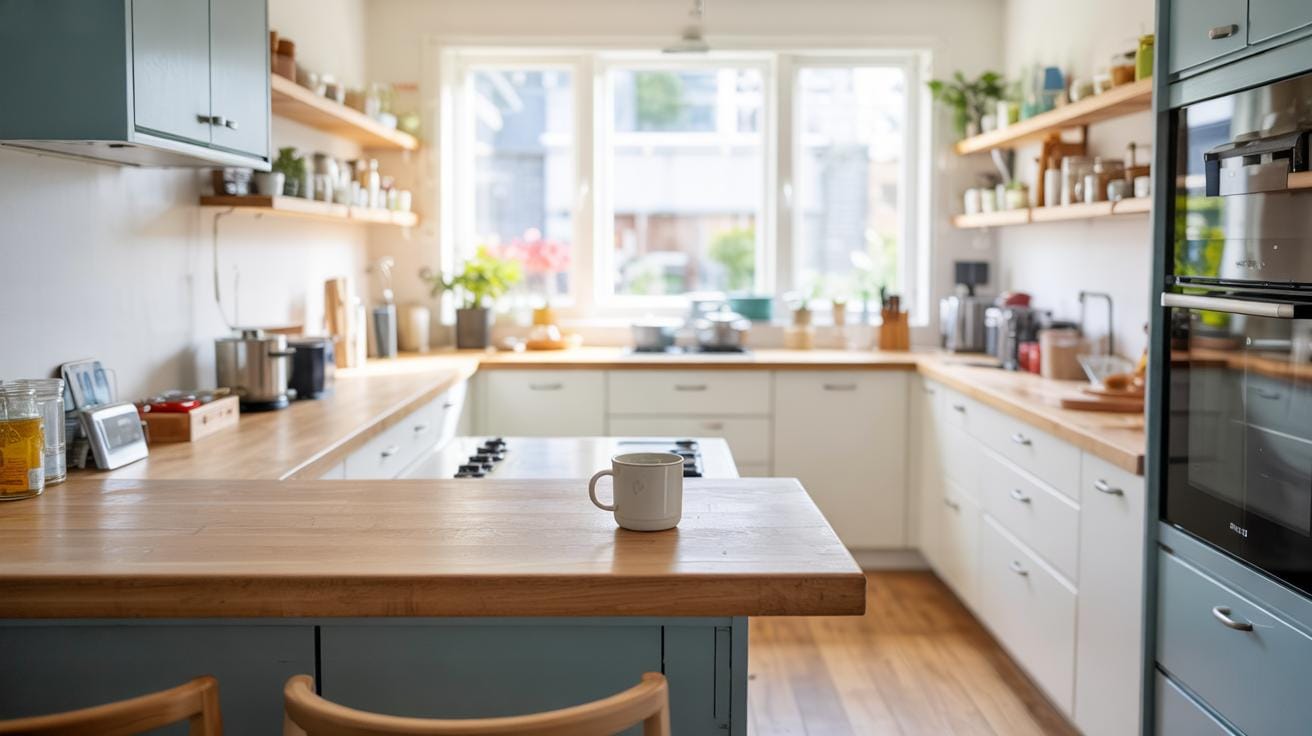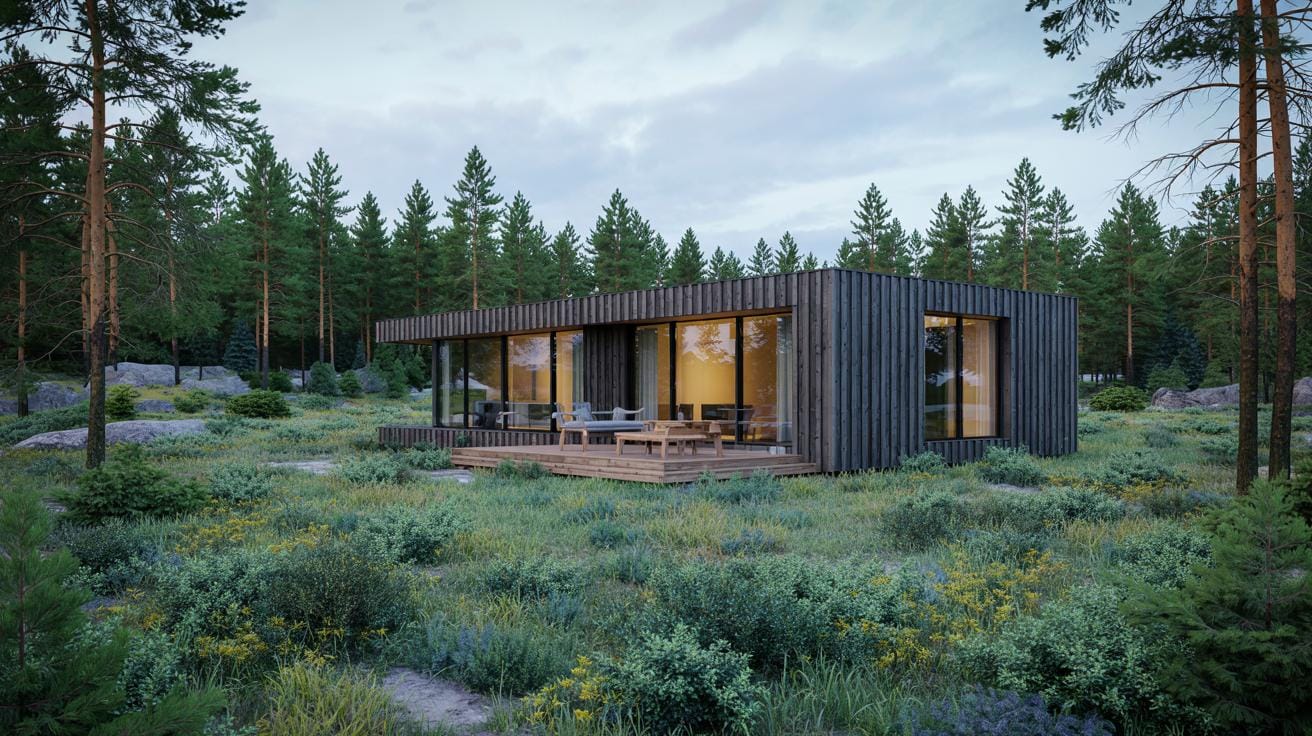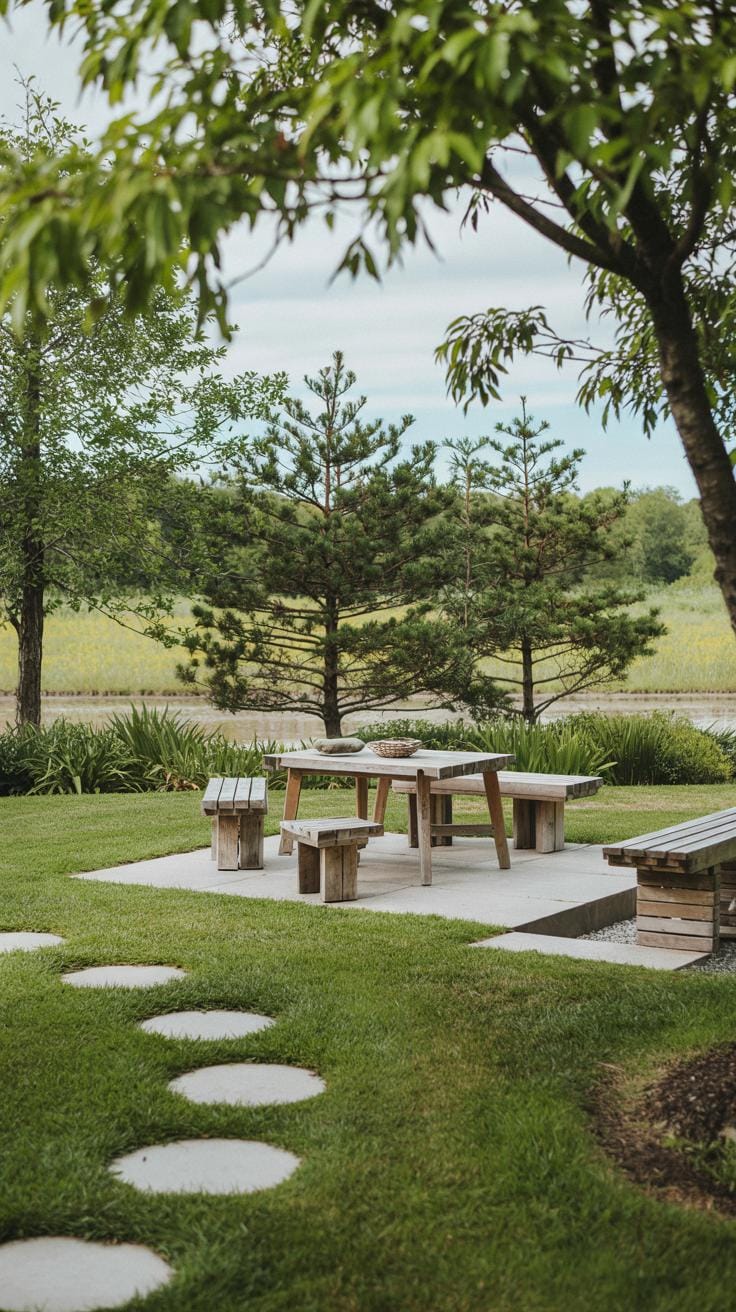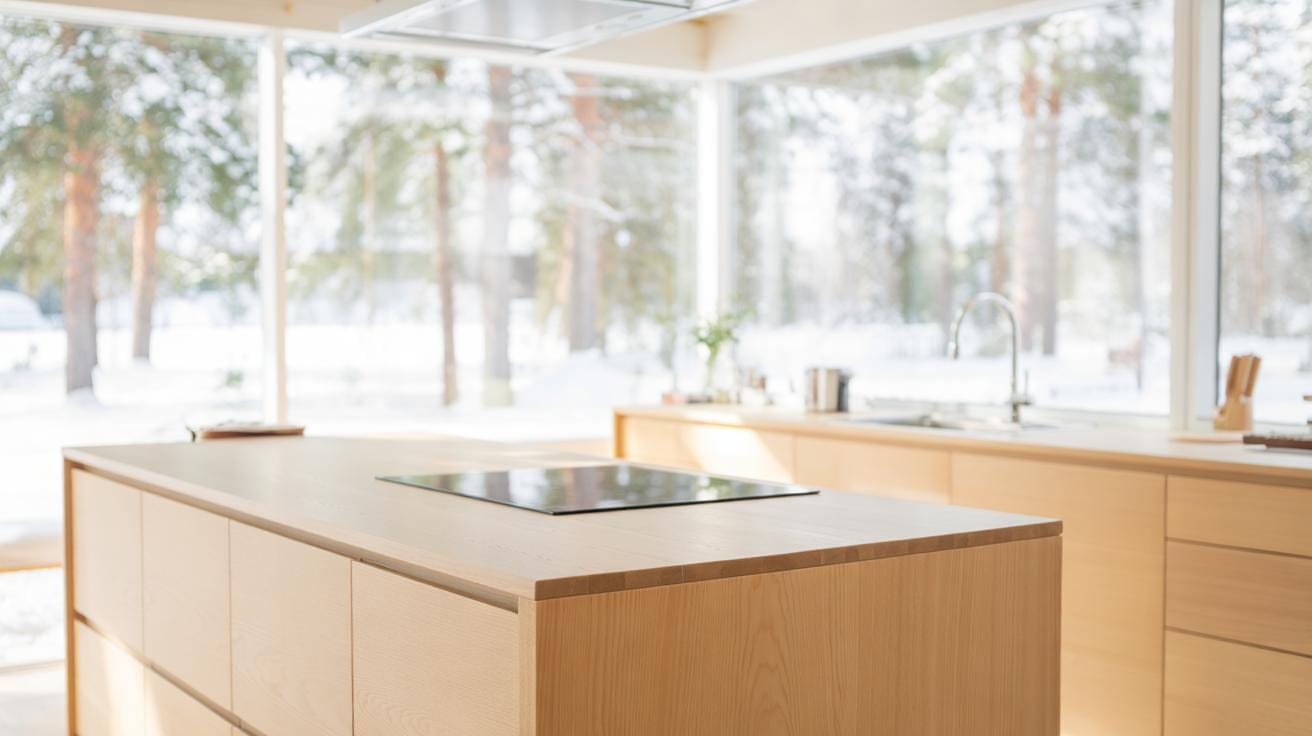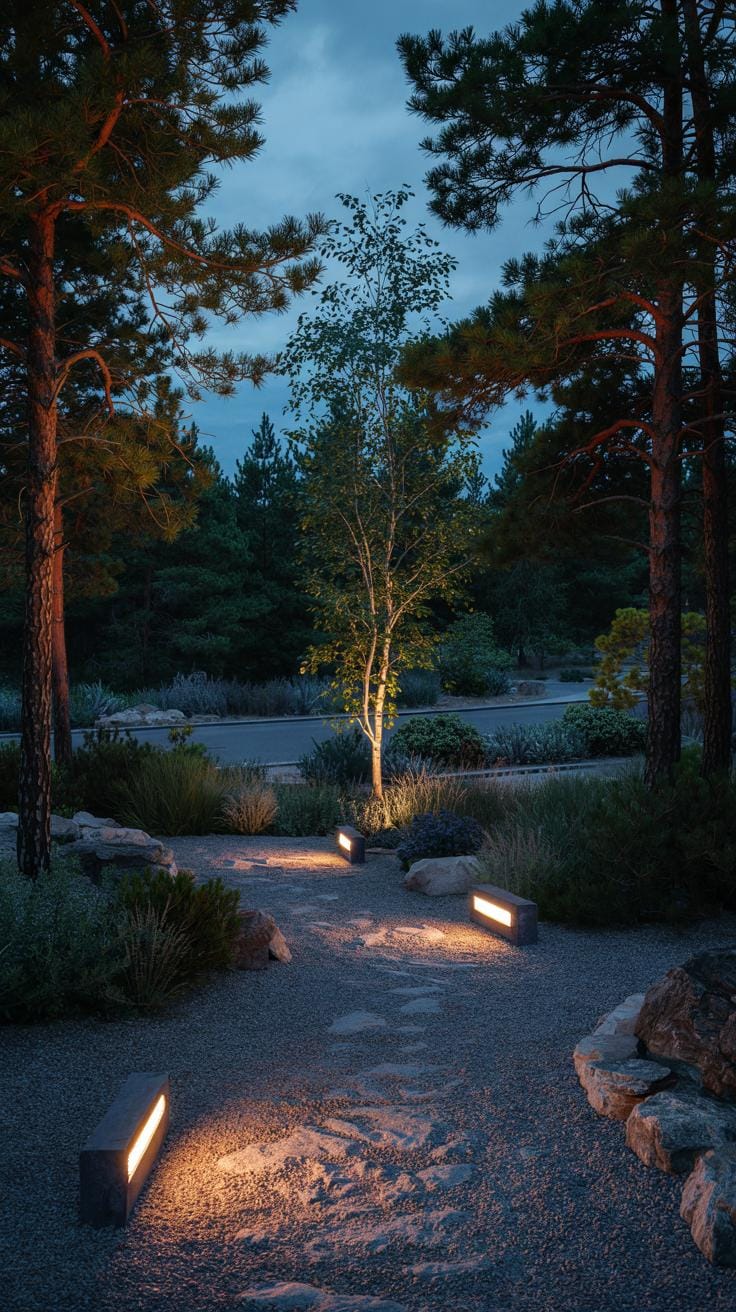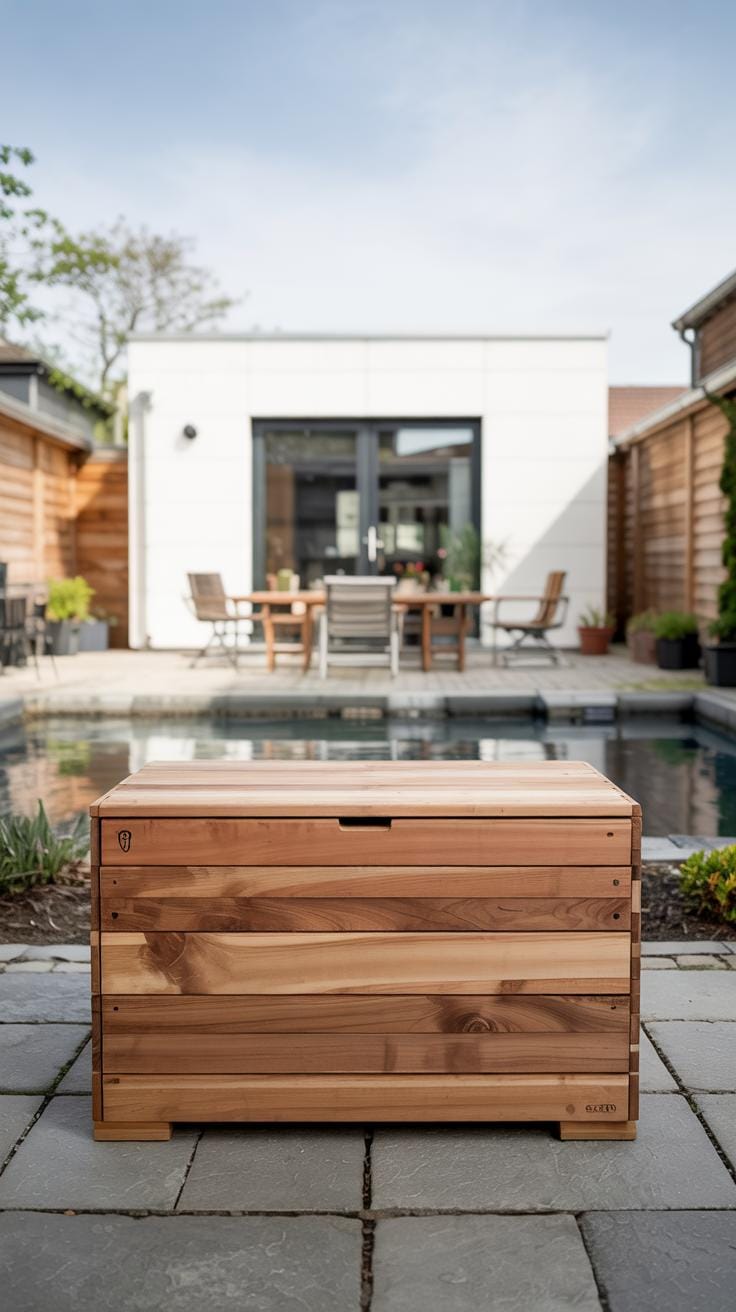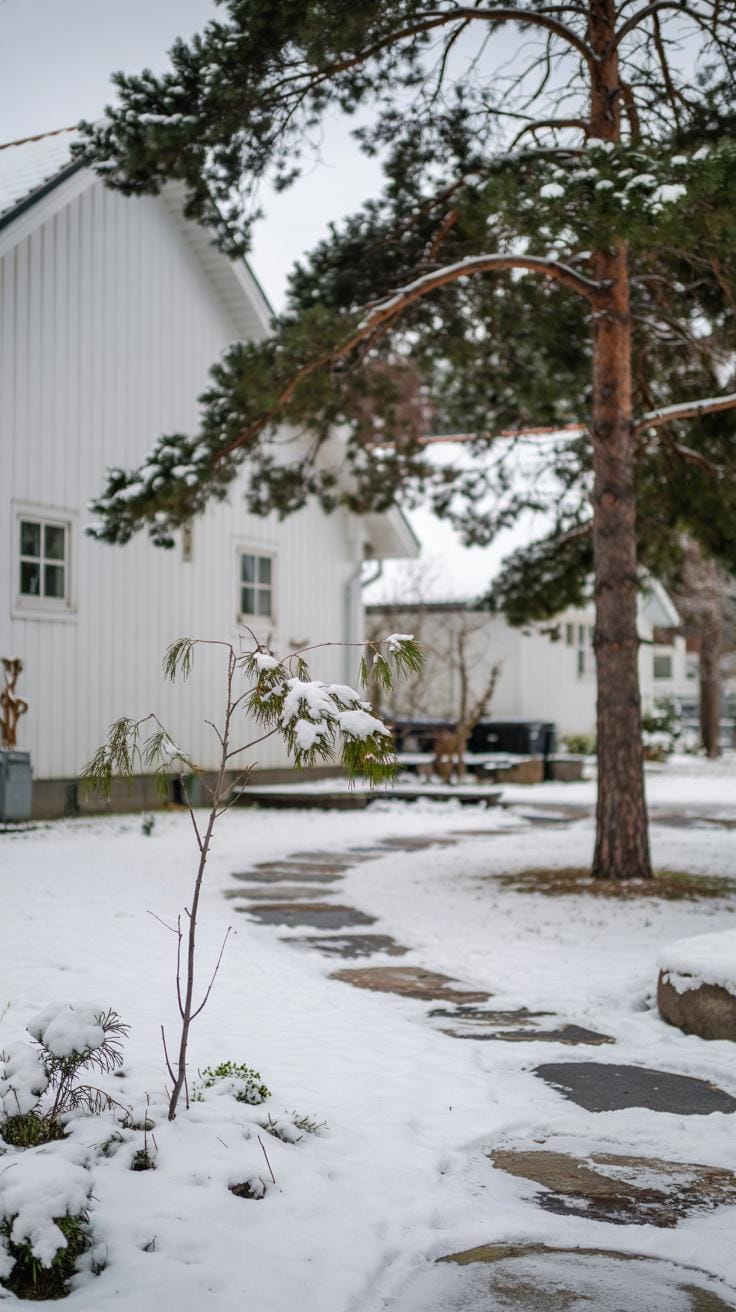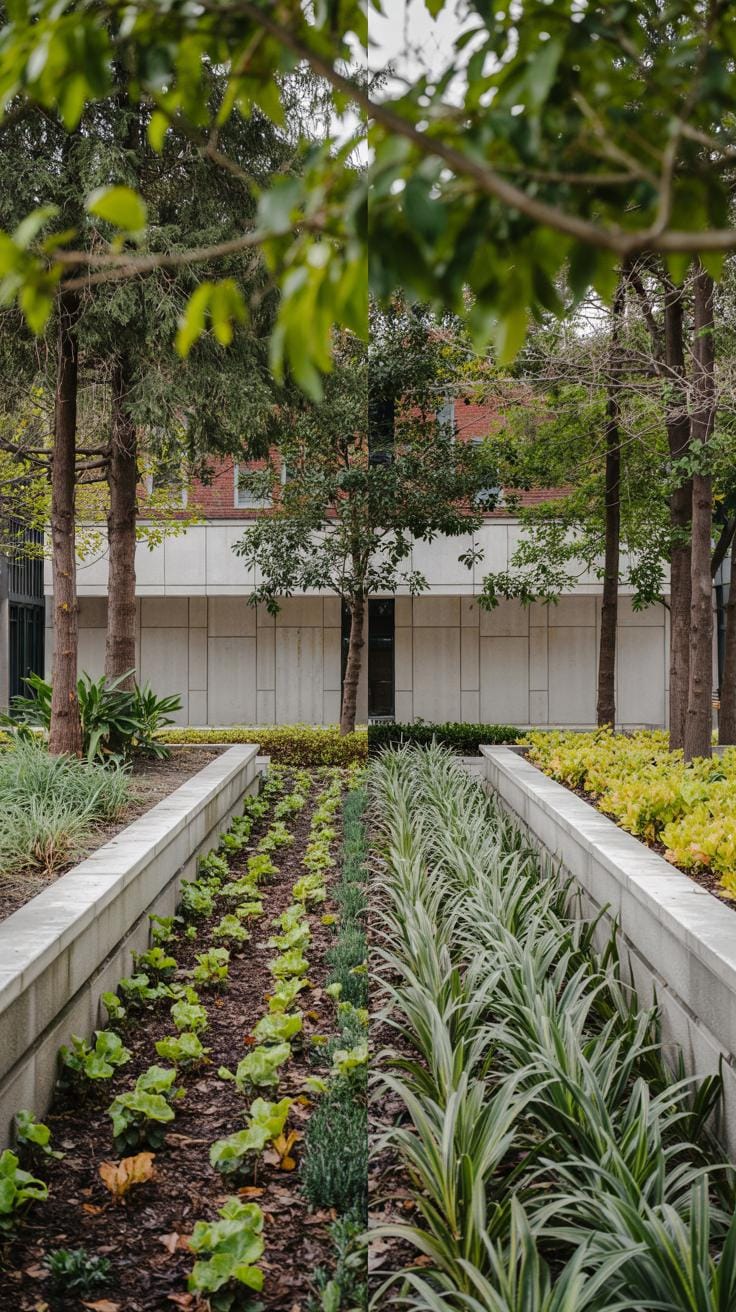Introduction
Scandinavian exteriors emphasize simplicity, functionality, and integration with the natural environment. They prioritize clean lines, muted colors, and materials that reflect the surrounding landscape. This style fits well with minimalist landscaping, which focuses on using only essential elements to create a striking but uncluttered outdoor space. The goal is to enhance your home’s beauty without overpowering it, creating a soothing and balanced outdoor atmosphere.
Minimalist landscaping complements Scandinavian design by using a restrained palette, natural materials, and simple geometric shapes. This approach helps emphasize open spaces, outdoor light, and the home’s architectural features. By combining these design principles, you can create an exterior that feels both modern and timeless, practical yet stylish. This article will explore practical ideas and tips to achieve a stunning Scandinavian exterior through minimalist landscaping techniques.
Understanding Scandinavian Exterior Design
Scandinavian exterior design centers on simplicity and function. Every aspect serves a clear purpose while staying visually calm. This style avoids unnecessary decorations, focusing instead on clean, straight lines that create a sense of order and peace.
Natural materials play a key role in Scandinavian homes. Wood, stone, and metal connect the building to the earth, making the structure feel grounded and authentic. This choice supports durability and blends the house with its environment.
The design aims to harmonize with the outdoors. It respects the landscape instead of dominating it. Instead of standing out, the home fits smoothly into its natural setting, inviting the changing seasons inside through spacious windows and open views.
Key Characteristics
Muted colors like soft grays, whites, and earth tones define the look. These shades reduce visual noise and create a calming effect. Wood often appears untreated or lightly finished, giving warmth without overwhelming the eyes.
Stone adds texture and strength, usually in simple shapes that complement the wood. Large windows appear without heavy frames, ensuring that natural light flows freely indoors. There is little use of ornate details, allowing form and material to speak clearly.
Every design choice feels intentional. What can you remove from your home’s exterior to sharpen its silhouette and emphasize its essentials?
Connection to Nature
Materials reflect the local landscape, whether it’s birchwood forests or granite cliffs. This creates a sense of belonging and continuity with the site. Instead of fences or walls, open spaces and natural borders often define the property lines.
Colors mirror seasonal changes. Cool blues and muted greens echo summer foliage, while warm browns and grays reflect autumn and winter tones. This connection encourages you to spend time outdoors and notice small shifts in the environment.
Do your exterior materials and colors respond to the surrounding nature, or do they stand apart? Aligning your home with nearby plants, rocks, and light sets a foundation for peaceful minimalist landscaping.
Principles of Minimalist Landscaping
Minimalist landscaping means focusing on the basic parts that make an outdoor space look neat and balanced. It cuts down on unnecessary details to highlight what really matters. This style creates tidy, peaceful areas by using fewer elements arranged with care. The goal is not just to have less, but to make every plant, path, and stone count.
Think about your yard like a blank canvas where each item has a purpose. By choosing simple shapes and clear lines, you bring order and calm to your outdoor space. Minimalist landscaping works well with Scandinavian homes because it doesn’t compete with the clean architecture but supports it.
Ask yourself which features you truly need outside. Can a single tree or a patch of grass replace a crowded garden bed? This approach makes your space feel spacious, balanced, and inviting without extra effort or clutter.
Simplicity and Function
Focus on function when planning your landscape. Every part of your outdoor space should serve a clear purpose. Walkways should guide you without twisting or turning too much. Seating areas should offer comfort and good views. Avoid adding features just for decoration if they won’t get used.
Simplicity also means fewer distractions. A clear space helps you relax and appreciate nature. It reduces stress and creates a quiet spot to enjoy fresh air. How often do you use your yard? Designing with function in mind makes your space work better for you every day.
Try removing elements one by one to see if the space feels better without them. You might find that less truly is more when it comes to outdoor living.
Use of Materials and Plant Selection
Choose natural materials like wood, stone, and gravel for your landscaping. These materials blend nicely with Scandinavian homes and age beautifully over time. Pick colors and textures that match your home’s exterior to create a smooth transition between indoors and outdoors.
Limit your plant choices to a few types that grow well in your climate. Evergreen shrubs, grasses, and native plants work great because they need less care and look good all year. Avoid mixing too many colors or shapes. Instead, repeat the same plants in different spots to build harmony.
Think about how plants change through seasons. Which plants will keep your yard interesting without overcrowding it? Careful selection helps keep your garden simple but lively throughout the year.
Choosing Materials for Scandinavian Minimalist Landscaping
The right materials shape the look and feel of your Scandinavian minimalist landscape. Selecting natural options like wood, stone, metal, and gravel strengthens the link to nature. These materials bring simplicity without overwhelming the space.
Wood, especially untreated or lightly finished, suits decks and benches. Its natural grain adds warmth while keeping the design clean. Stone works well for pathways or borders, offering a smooth or rough texture that contrasts softly with plants. Metal, often found in railings or garden lighting, introduces a sleek, modern touch without clutter. Gravel fills gaps, prevents weeds, and keeps lines clear. When each material serves a clear function, your landscape maintains order and elegance.
Sustainability and Durability
Choosing materials means thinking about their lifespan and environment impact. Sustainable wood, like FSC-certified pine or oak, lasts without harsh chemicals. Stones and gravel come from the earth and require little processing, reducing waste. Metals such as steel or aluminum resist rust and wear, lowering replacement needs.
How long will your materials stand outside through cold winters or heavy rain? Durable materials save time and resources on repairs. You protect both your yard’s look and the planet by choosing items that endure naturally without frequent replacement.
Color and Texture
Neutral tones shape Scandinavian minimalism. The muted grays of stone, pale beige of wood, and soft shades of gravel create calm backdrops. Textures should vary subtly, inviting touch and visual interest without drawing too much attention.
Think about smooth versus rough stone, or the linear grain of wood boards. These contrasts add layers to your design while staying restrained. What feelings do you want your materials to evoke? The simplicity of color with tactile detail lets your garden feel inviting but orderly.
Plant Selection and Placement
Your choices in plants play a key role in shaping a Scandinavian minimalist exterior. Select plants that require little upkeep and match the clean lines of your home’s design. Avoid plants with overly bright colors or complex shapes that could distract from your architecture’s simplicity. Think about texture and form instead of bold florals.
Consider plants with clear shapes and muted tones. Grass-like plants, simple shrubs, and small trees with slender profiles often work well. They keep the look fresh without adding clutter. How do you decide where to place each plant? Arrange them so that they accent corners or align parallel to architectural features such as windows, walls, or pathways.
Placement should support easy maintenance. Leaving ample space allows for growth and keeps the area tidy. When you position plants thoughtfully rather than randomly, your yard will feel intentional and calm. How might your plant choices highlight your home’s best features while keeping the landscape simple and functional?
Native and Evergreen Plants
Native plants suit your region’s climate, soil, and sunlight conditions. They thrive with less watering and fewer chemicals, saving time and effort. Evergreen plants add consistent color and structure throughout the year, resisting seasonal shifts that may disrupt a minimalist look.
For example, using native pines or spruces creates a strong vertical element that lasts through winter months. Smaller evergreens like boxwoods or junipers maintain neat shapes and mild tones suitable for Scandinavian style. You can maintain a green landscape even when other plants fade.
Choosing native and evergreen species lets you enjoy greenery year-round without heavy work. Have you looked into your local nursery’s native options? These plants often blend naturally with the environment while supporting local wildlife.
Creating Balance with Plant Groupings
Organizing plants into clean, geometric groupings supports the minimalist aesthetic. Clusters of three or five plants with similar shapes or colors create rhythm and harmony. Aligning groups along straight lines or gentle curves complements the architectural flow of your home.
For instance, a row of low boxwoods along a walkway or a trio of birch trees at a property corner can define space clearly. Avoid scattering plants without order, which risks visual clutter. Use repetition of plant types to unify your landscape.
Consider how size and spacing affect balance. Equal spacing allows each plant to be seen clearly, avoiding overcrowding. When you place plants in simple, deliberate shapes, your yard will feel calm and structured. How will your plant groupings emphasize your home’s lines and openness?
Designing Pathways and Outdoor Spaces
Creating pathways and outdoor spaces that reflect Scandinavian minimalism means focusing on clean lines and simple shapes. Your design should lead the eye naturally, favoring straight or gently curved paths without unnecessary complexity. Think about space as a calm, open area rather than cluttered zones.
When you plan your walkway, keep shapes geometric—rectangles or squares work well. Avoid winding, busy patterns that break the minimalist feel. Use narrow edges or subtle borders to contain your path without drawing too much attention.
Outdoor spaces should serve clear purposes. Arrange seating or dining areas in uncomplicated layouts with enough room to move easily. You want your exterior to feel purposeful, not crowded.
Pathway Materials
Choosing the right material for your pathways can instantly support a minimalist look. Gravel offers a natural, low-key texture that creates a soft outline for your walkways. It’s easy to maintain and adapts well to simple forms. Stone slabs provide flat, solid surfaces with clean edges. Opt for large, evenly spaced slabs with consistent shapes to reinforce order and simplicity.
Wood decking adds warmth without losing a streamlined effect. Select smooth, uniform planks and arrange them in straight lines or subtle patterns. Avoid highly textured or ornate surfaces that could disrupt the minimalist design. Consider how these materials age too—natural weathering complements the modest Scandinavian aesthetic.
Functional Outdoor Zones
Design your outdoor living or dining areas to focus on usefulness without adding clutter. Choose furniture with sleek profiles and minimal detailing. For example, a simple wooden bench paired with a low table creates a calm breakfast spot. Metal or wood chairs with clean lines work well around dining tables.
Keep accessories limited to a few purposeful pieces, such as a single planter or a small lantern. Avoid overcrowding with decorations; each item should earn its place by serving a function. Think about comfort and usability first. How often will you use the space? What activities matter most to you outside?
Fitting furniture and zones within clear boundaries helps define your space without extra partitions or barriers. This keeps your Scandinavian exterior feeling open yet organized.
Lighting for Scandinavian Minimalist Landscapes
Lighting plays a key role in supporting the clean, simple lines of a Scandinavian exterior. Your aim is to add warmth and clarity without overpowering the quiet elegance of the space.
Think about how light interacts with your home’s form and natural elements after dark. Emit a soft glow that invites you to enjoy outdoor spaces comfortably and calmly. Avoid harsh or bright fixtures that distract from the minimalist design.
Strategic lighting can guide attention toward the architectural features or natural shapes you want to emphasize. Use well-placed lights to create contrast and depth while maintaining balance.
Ask yourself: How can lighting add to the mood without cluttering the visual field? Choose carefully so that the beauty of your Scandinavian home and its surroundings shines clearly with subtlety.
Subtle and Soft Lighting
Soft lighting creates a calm atmosphere that fits perfectly with minimalist landscaping. Choose fixtures designed to blend quietly into the scene rather than stand out.
Consider recessed lights, low-level path lights, or fixtures hidden behind shrubs or stones. These options provide gentle illumination that feels natural and unobtrusive.
Think of light as a layer that wraps the landscape in warmth instead of a spotlight that demands attention. The goal is to gently enhance, not compete with, your clean and simple exterior.
Have you found lighting that disappears visually during the day but reveals its function at night? That balance will support the simplicity you value in your Scandinavian design.
Highlighting Features
Use directional lighting to draw attention to specific architectural or natural focal points. This technique adds interest without adding clutter.
For example, focus a narrow beam on a textured wooden wall or a carefully pruned tree. The contrast between light and shadow adds dimension and depth to your exterior.
Place lights low to the ground and angle them upward for a subtle effect. Avoid shining lights directly into eyes or creating harsh glare.
What features of your exterior deserve a quiet spotlight? Use light to reveal thoughtful design details and natural beauty while preserving the overall minimalist feel.
Maintaining Simplicity with ClutterFree Outdoor Storage
Your Scandinavian exterior thrives on clean lines and open space. Incorporating practical storage without disturbing this simplicity is key. Think about where garden tools, cushions, and outdoor gear sit when not in use. If left out, they break the minimalist flow.
Integrate storage solutions that blend with your home’s exterior materials and colors. For example, use built-in cabinets along fences painted in neutral tones or wooden boxes that match your decking. These can hold items out of sight while keeping the overall design intact.
Ask yourself: Can your storage double as a design element? When practical storage solutions become part of the look, you maintain order and style. Keeping your outdoor living space clutter-free lets you enjoy the tranquil Scandinavian aesthetic every day.
Hidden Storage
Hiding garden tools and equipment can keep your outdoor area neat without sacrificing style. Conceal your storage behind slatted wooden panels that match your fencing or exterior wall color. This preserves the clean, uninterrupted lines common in Scandinavian design.
Built-in benches with storage compartments are another option. They keep tools stashed away but stay subtle and sleek. Small storage sheds can be designed as simple cubes with flat roofs, painted to blend in or even covered with greenery for extra concealment.
Think about what you use often and create easy access points for those items. Hidden storage should never make your space feel closed off or crowded. How might you design your storage so it disappears into the background?
Multi-Functional Furniture
Furniture that serves more than one purpose reduces clutter and keeps your outdoor area orderly. Choose benches and tables with built-in storage spaces. A wooden bench with a lift-up seat, for example, can hide cushions or garden supplies.
Coffee tables with drawers or shelves offer spots for small tools or magazines. Storage ottomans provide seating and a place to stow smaller items. This dual use prevents extra boxes or bins piling up.
When selecting furniture, consider sizes and shapes that fit seamlessly into your space. What pieces can you add that meet multiple needs? Multi-functional furniture is one of the smartest ways to maintain the clarity and calmness of a Scandinavian outdoor design.
Seasonal Considerations in Scandinavian Minimalist Landscaping
Your Scandinavian exterior should look balanced and inviting throughout the year. Planning with changing seasons in mind keeps your landscape both beautiful and practical. Think about how your plants and materials will perform in cold winters, fresh springs, warm summers, and crisp autumns.
Choosing plants that can withstand frost and snow while adding subtle seasonal interest helps maintain a clean look. Consider hardy grasses, low-maintenance shrubs, and elements that won’t fade or wilt quickly. Plan walkways and seating areas with materials that resist moisture and wear during snowy months. How can you make sure your outdoor space feels purposeful even when greenery is sparse?
Focus on structural elements in early planning. They act as the foundation for seasonal touches and create a consistent design. This approach pushes you to avoid clutter and strengthens your landscape’s minimalist appeal all year long.
Evergreens and Hardscape Focus
Evergreens carry your landscape’s shape and color through winter. Plants such as pine, spruce, and juniper keep your garden vibrant when other plants lose leaves. Place them thoughtfully to frame pathways or accent corners without overcrowding your space.
Hardscape materials like stone, concrete, and gravel provide structure and texture. Choose simple shapes and neutral colors that blend with your home’s exterior. These materials withstand snow and ice, keeping paths safe and clear.
Durability matters. When designing areas exposed to harsh weather, pick stones that won’t crack and use non-slip surfaces. How can your stone placement guide visitors while highlighting your home’s lines discreetly?
Seasonal Plantings
Introduce seasonal flowers sparingly to maintain your minimal theme. Select blooms in soft colors like whites, blues, or pale pinks. Use planters or beds in key spots instead of filling large areas. This method keeps seasons noticeable without overwhelming simplicity.
Spring bulbs such as tulips or crocuses add freshness early in the year. In summer, try delicate flowers like white daisies or lavender that fit the clean aesthetic. Autumn calls for subtle accents, like ornamental grasses or small mums, which fade gracefully into winter.
Consider replacing plants rather than mixing many types at once. How can minimalist seasonal changes keep your landscape interesting without disrupting the overall design?
Common Mistakes and How to Avoid Them
Many try to combine Scandinavian exteriors with minimalist landscaping but end up making simple spaces feel cluttered. One main error is adding too many design elements. When too many plants, decorations, or furniture pieces compete for attention, the clean lines and calm atmosphere of Scandinavian style get lost. You want your outdoor space to feel open and peaceful, not crowded.
Focus on choosing a few well-placed features that match the natural colors and materials of your home. For example, selective use of native trees, gravel pathways, or plain wooden benches help keep the design clear. Ask yourself: Does this item add to the calm, fresh look or distract from it? Remove anything that doesn’t serve the space visually or functionally.
Overcomplicating the Design
Trying to add every trendy idea dilutes minimalist landscaping, especially with Scandinavian homes. Simple shapes and limited colors create calm, so adding too many textures, plants, or decorations breaks that harmony. A few natural elements—like smooth stone, whitewashed wood, and green shrubs—work better than many colorful or detailed items.
Clear the clutter by focusing on basic forms and repeating materials to create unity. Use clean lines and open areas. How much do you really need to maintain your garden? Keep only things that make a meaningful impact on the space and your daily outdoor life.
Ignoring Functionality
Minimalist landscapes sometimes look stunning but feel cold or unusable. If your outdoor space lacks places to sit, relax, or move freely, you miss the Scandinavian goal of welcoming comfort. A design must balance style and practical use if you want to enjoy it year-round.
Think about how you will actually use the space. Add a simple bench or sheltered area without disrupting the clean look. Pathways should be wide enough and easy to walk on. Lighting can be subtle but effective for evenings. Your garden should invite you outside, not just look good from the window.
Conclusions
Scandinavian exterior design and minimalist landscaping work in harmony to create spaces that feel open, calm, and inviting. By focusing on simplicity and functionality, you enhance your home’s natural beauty and architectural details. Thoughtful choices like using natural materials, clear lines, and a limited plant palette help keep your outdoor space visually balanced and easy to maintain. How you arrange these elements can greatly impact the overall feel of your exterior.
Applying minimalist landscaping principles requires discipline but offers great rewards. Keeping your outdoor space simple and uncluttered gives room for light, air, and nature to shine through. Consider how each plant, material, and feature serves a purpose in your landscape. Doing so will help you create a Scandinavian-inspired exterior that looks clean and modern while feeling warm and welcoming. Your outdoor space can become a reflection of the peaceful, practical lifestyle Scandinavians value.


